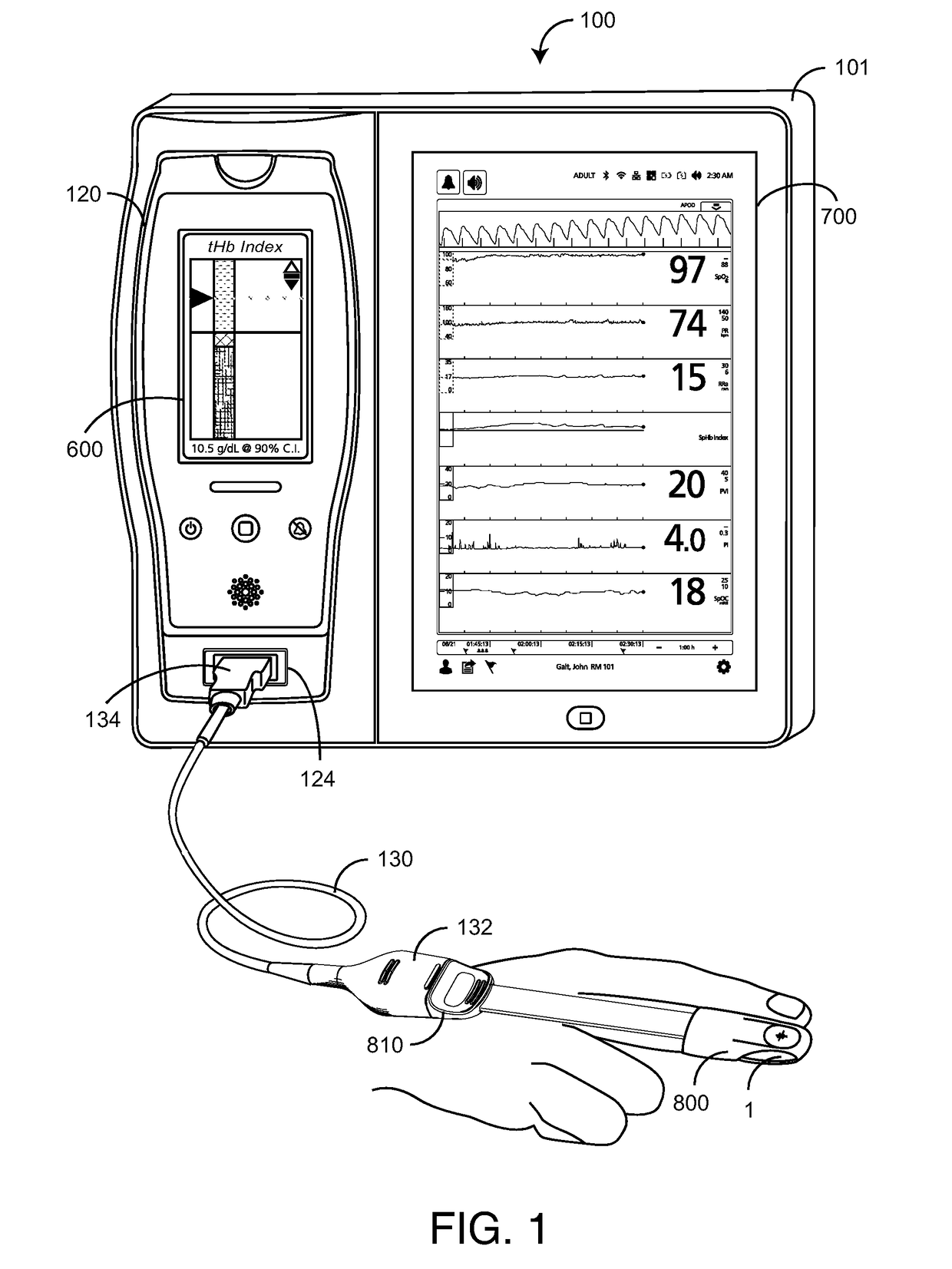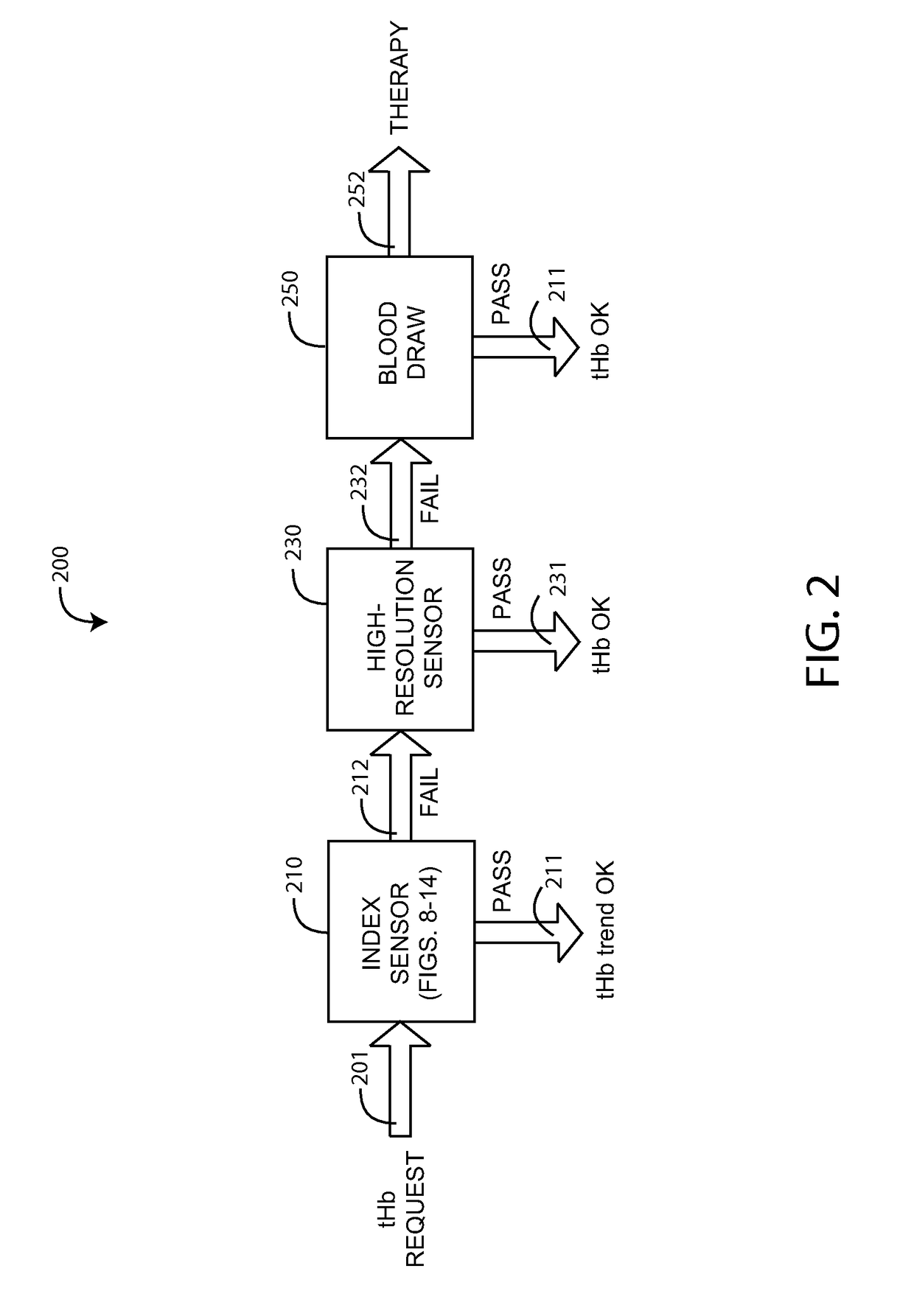Total hemoglobin screening sensor
a technology of hemoglobin and sensor, which is applied in the field of total hemoglobin screening sensor, can solve the problems of increasing bleeding significantly increasing and infrequent traditional lab measurements, so as to facilitate timely patient assessment, increase the corresponding risks of serious injury or death, and increase the total cost of patient treatment
- Summary
- Abstract
- Description
- Claims
- Application Information
AI Technical Summary
Benefits of technology
Problems solved by technology
Method used
Image
Examples
Embodiment Construction
[0024]FIG. 1 illustrates a total hemoglobin (tHb) index system 100 including a standalone monitor 101, a portable handheld monitor 120 and a disposable optical sensor 800. The standalone monitor 101 has a main display 700 and the removable handheld monitor 120 has a handheld display 600. The optical sensor 800 attaches to a fingertip 1 so as to optically analyze blood constituents therein, including tHb and others described with respect to FIG. 7, below. In a particular embodiment, the sensor 800 has emitters (LEDs) capable of irradiating the tissue site 1 with multiple wavelengths of light and corresponding detectors capable of detecting the light after attenuation by pulsatile blood flow within the tissue site 1. The sensor 800 removably connects to a patient cable 130, which connects to the monitor 101. In particular, the patient cable 130 has a sensor-side connector 132 that removably attaches to and electrically communicates with the sensor connector 810 and a monitor-side conn...
PUM
 Login to View More
Login to View More Abstract
Description
Claims
Application Information
 Login to View More
Login to View More - R&D
- Intellectual Property
- Life Sciences
- Materials
- Tech Scout
- Unparalleled Data Quality
- Higher Quality Content
- 60% Fewer Hallucinations
Browse by: Latest US Patents, China's latest patents, Technical Efficacy Thesaurus, Application Domain, Technology Topic, Popular Technical Reports.
© 2025 PatSnap. All rights reserved.Legal|Privacy policy|Modern Slavery Act Transparency Statement|Sitemap|About US| Contact US: help@patsnap.com



